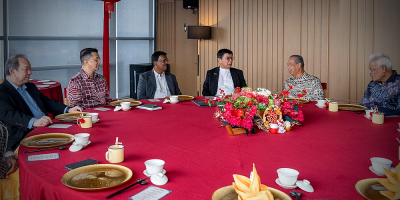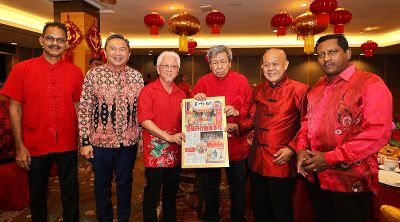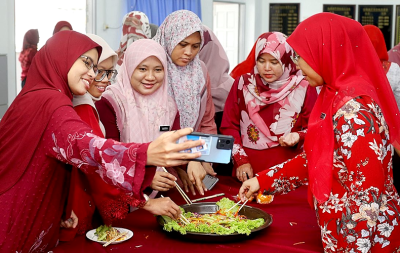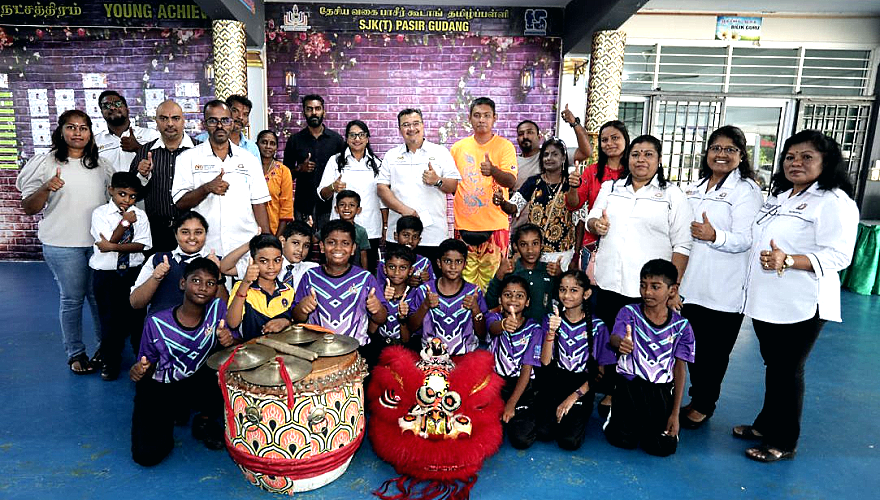
PASIR GUDANG: The lion dance troupe of SJK (Tamil) Pasir Gudang is likely the first Indian lion dance troupe in the country.
One or two Indian performers in a lion dance troupe, which is part of the Chinese culture, is nothing unusual nowadays, but not a team made up exclusively of Indians!
Formed August last year, the SJK(T) Pasir Gudang lion dance troupe caught the attention of many when it performed in a Mid-Autumn Festival celebration at Kampung Baru Masai.
It started with a mother, 37-year-old Kalavani, whose child is studying at the primary school, who first proposed to the school to form a lion dance troupe, and referred lion dance instructor Tom Chan to the school.
She has two other children who love lion dance, and have both learned from Chan for over a year.
After discussing with the school’s parent-teacher association, headmistress C. Thilagavathy said all agreed to the proposal, as the lion dance troupe would help promote racial integration, paving the way for the first Tamil primary school among 72 Tamil schools in the state of Johor to ever house a lion dance troupe, a reflection of cultural integration and racial harmony in Malaysia.
It was not a smooth start as the school had to explain to parents who were questioning the rationale of learning the culture of other people while some were fearful that lion dance may contain religious elements.
Both Thilagavathy and parent-teacher association chairman K. Krishnamoorthy were not familiar with the background of lion dance except watching the performance during Chinese New Year.
However, Krishnamoorthy encouraged his child to join the lion dance troupe, and he came to know that several other parents also learned lion dance before.
With the assistance from Chan, the lion dance troupe was formed with 25 boys and girls from Year Two to Year Four. The school has a total of 247 pupils.
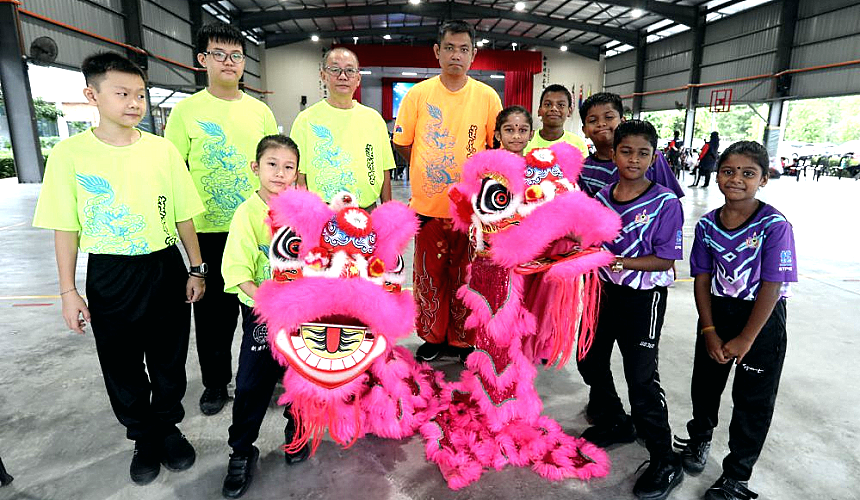
Chan, who spends two hours every Monday afternoon to teach the students, said he borrowed lion heads, drums, gongs and cymbals to the school, as majority of the pupils are from B40 families and the school did not have the budget to purchase the equipment and props.
However, he was surprised by the pupils’ commitment to learn.
Chan had to rely on some pupils for translation to help him communicate with the students, some of whom were not conversant in the Malay language.
In return, Chan picked up some Tamil from the pupils, another example of Malaysians learning from one another in cross-cultural interactions.
As a sign of cultural integration between the Chinese and Indian cultures, Chan has designed a peacock-style lion for the troupe for use in a performance. The lion head is slightly different from the normal ones, as the body of the lion is covered with images of peacock feathers.
The steps of the performance are also a blend of Chinese and Indian dances, he added.
After the SJK(T) Pasir Gudang lion dance troupe made its debut at Kampung Baru Masai last year, it has received invitations for performance during Deepavali celebrations, as well as invitations from Chinese primary schools.
Chan said he also received inquiries from other Tamil primary schools on establishing lion dance troupes.
Pasir Gudang Deputy Education District Officer Mohd Jefferin Saat supports the SJK(T) Pasir Gudang to form a lion dance troupe as this is one of the ways to promote unity.
He recalled his student days at SMK Johor Jaya where 70% of the students were Chinese and he was attracted by the school’s diabolo activities.
“Learning other cultures is a form of cross-cultural exchange. We do not need to be suspicious, and political intervention is not necessary,” he said.
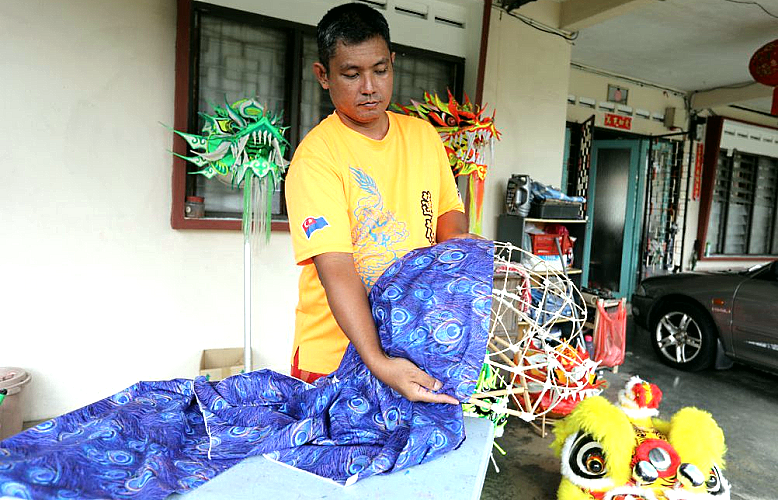
ADVERTISEMENT
ADVERTISEMENT







